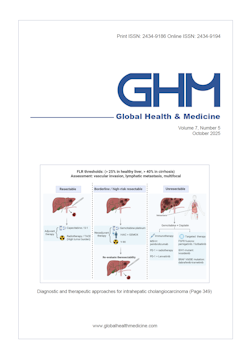Global Health & Medicine 2021;3(3):125-128.
Behavioral changes adopted to constrain COVID-19 in Japan: What are the implications for seasonal influenza prevention and control?
Sawakami T, Karako K, Song PP
Respiratory disease deaths associated with seasonal influenza are estimated to be 290,000 to 650,000 per year globally. In Japan, seasonal influenza affects more than 10 million people per year, and especially children, the elderly, and patients with underlying medical conditions, and seasonal influenza can cause severe illness. As SARSCoV- 2 continues to spread, the combined risk of concurrent influenza epidemics and the COVID-19 pandemic are a concern. When the status of influenza virus infections during the 2020-2021 flu season was compared to the 2011 to 2020 flu seasons, data indicated the absence of seasonal influenza outbreaks in Japan during the COVID-19 pandemic. The number of flu patients was roughly estimated to be 14,000 nationwide from September 2020 to March 2021, which marks the first sharp decrease since national influenza surveillance started in 1987 in conjunction with National Epidemiological Surveillance of Infectious Diseases (NESID). Moreover, approximately 500 sentinel sites (designated medical facilities) nationwide reported only 112 patients with severe influenza who required hospitalization. Since prevention and control measures amidst the COVID-19 pandemic have become the "new normal", one can reasonably assume that the absence of a seasonal influenza outbreak is related to prevention and control measures implemented in response to the COVID-19 pandemic. Basic infection prevention measures were thoroughly implemented, such as wearing masks, handwashing, and avoiding confined spaces, crowded places, and close-contact settings. More importantly, the behavioral changes adopted to constrain COVID-19 during three declared states of emergency reduced population density and contact with people, including closing schools, asking restaurants to reduce their business hours, teleworking, curbing the flow of people during vacation week, etc. These behavioral changes will serve as a valuable reference to reduce the spread of seasonal influenza in the future.
DOI: 10.35772/ghm.2021.01066







